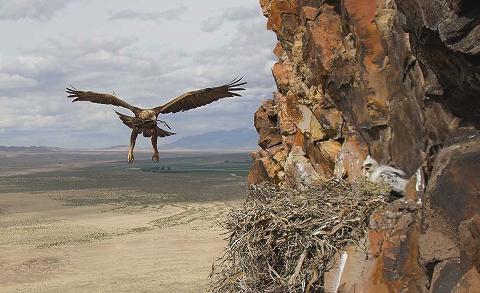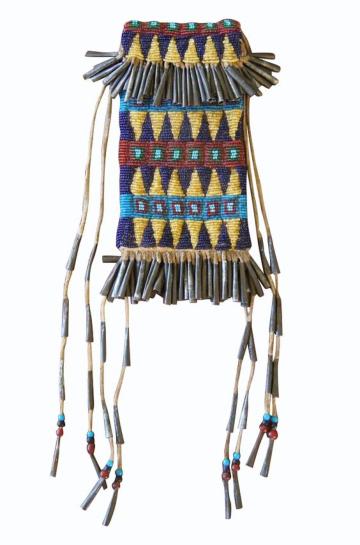 |
Canku Ota
|
 |
|
(Many Paths)
|
||
|
An Online Newsletter
Celebrating Native America
|
||
|
January 2018 - Volume
16 Number 1
|
||
|
|
||
|
Man Who Helped the
Eagles - Apache Myth
|
||
|
by Compiled and edited
by Kathy Weiser/Legends of America
|
||
An Apache was very poor and went about among the Pueblo Indians
picking up the food they threw away. That was all he had to eat.
Over by the river there was an eagle nest on top of a sheer
cliff. The Pueblo Indians treated the Apache well giving him plenty
of food. He went with them to the eagle's nest. They tied a rope
to him and lowered him down where the two little eagles were sitting.
He took off the rope and stayed there with the eagles. Those above
pulled up the rope just by itself. In vain, they let down the rope
to him. He remained with the eagles. The others left him and went
away. They came back again and let down the rope in vain. Again
they left him. The father of the eagles came home. "DagônadeL, you
are staying with my children. I thank you," he said. Then he
opened the house and they went in. (His house was behind the solid
rock.) He gave him some food in a very small clay dish. "That
is not enough for me," he thought. The man took off his coat
and hung it on the wall. Then he was like any other man. He gave
his coat to the man. "Run around with my children for me,"
he said. He flew across to a stone standing on the other side and
back again. He flew way off and came back. He was strong.
The man who lived there called and from the center of the sky
a large number of them came down. Some of them wished to carry him
on their interwoven wings while some of them wished him to fly and
others did not want him to. They put wings on him that were stretched
out long and started out with him, up into the sky. The eagles flew
under him carrying him up. When he was near the sky hole he began
to fall he was so tired. The others got under him carrying him up.
Then Panther let down his tail through the sky hole. The man seized
it and he was pulled up. Panther had his home there. They had enemies there with whom they fought. The hornets were their enemies. Some of them were black, some of them were yellow. The yellow ones had yellow houses; the black ones had black houses. Panther had much buckskin from which he made him shirts of many thicknesses. There were holes just for the eyes. The man went with the eagles to find the enemy. They camped close by them. He was carrying a quirt in his hand. Early the next morning when they went after wood they met the enemy and began to fight with them. The hornets were killing them. The man put on the shirt Panther had made for him and began whipping around with the quirt. He strung the bodies of those he had killed on a stick. He had two sticks of them. The eagles came back to their home. One of them said, "DagônadeL was killed first of all." Panther said, "My grandchild is very brave. Watch for the men he has killed." When he came back there from fighting the enemy, they commenced dancing around in a circle. Meadowlark danced around sunwise. "You had better go down, you say bad words against the people," they told him.
|
||||
|
|
||
|
|
||
| Canku Ota is a free Newsletter celebrating Native America, its traditions and accomplishments . We do not provide subscriber or visitor names to anyone. Some articles presented in Canku Ota may contain copyright material. We have received appropriate permissions for republishing any articles. Material appearing here is distributed without profit or monetary gain to those who have expressed an interest. This is in accordance with Title 17 U.S.C. Section 107. | ||
|
Canku Ota is a copyright ©
2000 - 2018 of Vicki Williams Barry and Paul Barry.
|
||
 |
 |
|
|
The "Canku
Ota - A Newsletter Celebrating Native America" web site and
its design is the
|
||
|
Copyright ©
1999 - 2018 of Paul C. Barry.
|
||
|
All Rights Reserved.
|
||

